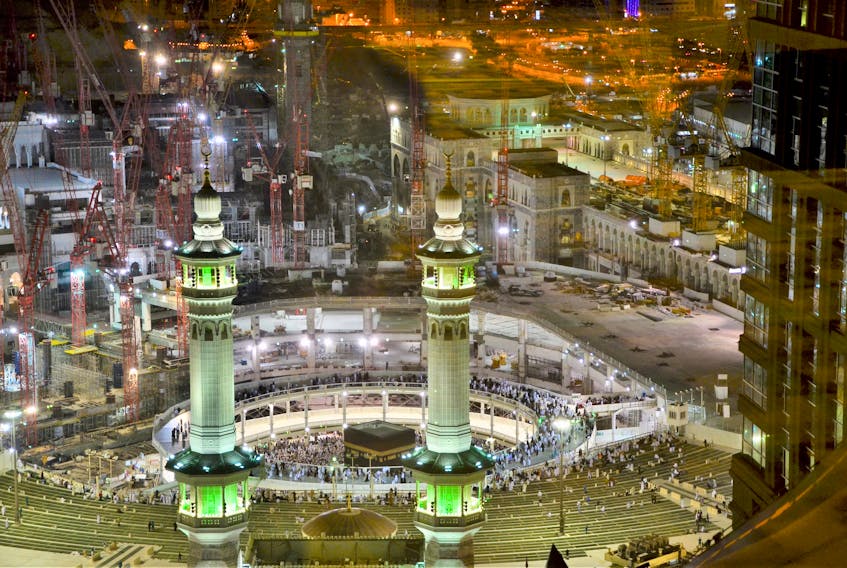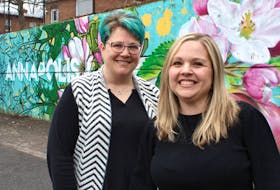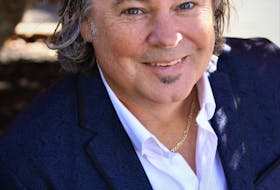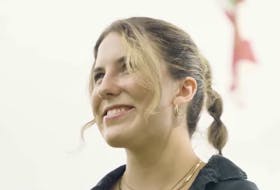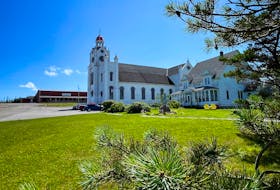October is the month to celebrate Islamic heritage in Canada.
In 2007, Parliament proclaimed October as the Canadian Islamic Heritage Month in recognition of the significant contributions the Muslim community has made to Canadian society.
The most distinctive feature of Islam is twofold.
First, it is the only religion which claims to be and is the final, the universal and eternal religion for all times and for all peoples. Second, it is the only religion which acknowledges and bears witness to the veracity of every other religion and claims that the truth is not the monopoly of Islam alone.
The outstanding contributions of Islam have not only enhanced and served to enrich our lives but also brought recognition to Canada and comfort to people both at home and abroad.
Islamic efforts span a wide gamut of fields from sciences, literature, trade and entrepreneurship to medicine, media, music and sports. Their outstanding contributions to humanity are rarely acknowledged and known, except by a few. These have enriched our past, are doing so at present and will inspire and motivate generations to come.
Followed by more than a billion people today, Islam is the fastest growing religion in the world. The 1.8 billion Muslims make up approximately one-quarter of the world's population. Indonesia, Bangladesh, Pakistan and India have the most adherents. Indonesia alone, with its population of 270 million, exceeds the combined population of Muslims in Egypt, Syria, Saudi Arabia, Iraq and Iran, the traditional heartland of Islam. Europe and North America also have large Muslim populations.
Islam, a name given by Allah to this religion (Qur’an 5:4), is an Arabic word which literally means obedience and peace. Islam is derived from the Arabic root “salema”: peace, purity, submission and obedience. So Islam would mean the path of those who are obedient to Allah and who establish peace with Him and His creatures. Its followers are called Muslims.
Islam is not a new religion. It is, in essence, the same message and guidance which Allah revealed to all prophets before Prophet Muhammad, peace be upon Him. Allah says in the Qur’an 3-85: “Say, We believe in Allah and that which has been revealed to us, and that which was revealed to Abraham and Ishmael and Isaac and Jacob and the tribes, and in that which was given to Moses and Jesus and other Prophets from their Lord. We make no distinction between any of them and to Him we submit.”
Sunni and Shi’a are its two main branches. Of the total 73 different sects in Islam, Ahmadiyya Muslims is one of them. Like any other major religion, Muslims incorporate a wide spectrum of opinions ranging from conservatives, moderates, liberals to secularists and revolutionaries.

In Canada, they form only three per cent of the total population, but their contributions to Canada far outweigh their numbers. They, too, are committed to building a healthy, happy and a just society for all Canadians.
It was quite a miraculous change when Muhammad (peace be on Him) startled the world by changing that same desert clans into active promoters of Islam to far corners of Asia, Africa, Europe. He developed a culture that created wonders of incredible beauty, sophistication and marvels.
Muhammad was born in 570 AC in Mecca. He was quiet and trustworthy. They called him “Al-Amin.” He claimed to be the Prophet of God and taught there was only one God.
Muhammad was persecuted by the people of Mecca. He left for Medina on an invitation from its residents. To this day that journey is celebrated as Hijrat in Arabic. Muslim Lunar calendar begins with that date 622 AC. The city of Yethrib was renamed as Medina-tun-Nabi in his honour as the city of the Prophet.
Arab Muslims progressed and showed a new interest in science. Our modern world owes Arab Muslims this spirit of inquiry. Muslims introduced new scientific inquiry that gave rights to progress in astronomy, chemistry, physics, mathematicians, philosophy, literature, art, architecture and music.
Islam preserved knowledge in the form of books and kept artistic and scientific innovations alive. The Silk Road, a trade network that stretched from China to Turkey, was maintained by Islamic rulers. Though made famous by the trade in silk, this essential trade route also transmitted technologies and ideas like gun power, paper and water wheel. The contributions came from economic centres in the Byzantines and Islamic cities like Constantinople and Alexandria.
Astronomy, geography, philosophy and literature transmitted the works of the Greeks, Indians and others into Arabic and built upon their discoveries and research.
Muslims scholars studied Ptolemy's tables and made their own observations which they enhanced and used for multiple purposes. Muslim scientists, such as Ibn-Al-Hayan, studied optics and made great strides in the field. They were also interested in timekeeping and inventors Ibn-Haytham and Al-Jazari designed various types of clocks. In geography and history, Ibn Battuta is considered one of the greatest travellers of all time.

In philosophy and poetry, Averroes and Rumi are still world renowned. The tolerance and learning that characterized much of Islamic history allowed these advances and contribution. Al Berooni was a great historian. His contributions are immeasurable. Hafiz Sa’adi is still remembered for his mysticism.
Islam was responsible for creating the first public library in early decade Islam. Mosques were hubs for intellectual discourse across Muslim lands. They acted as a place of worship, housed libraries of books on religion, philosophy and science. These were open to anyone.
Qasim Al Zahrawi was a 10th century Muslim surgeon described as outstanding and who invented many tools still used in modern surgery such as the scalpel and surgical scissors. He also discovered catgut as a reliable material to stich internal tissues to avoid second surgeries to remove the stitches.
In the 11th century, Ibnul-Haytham overturned ideas about how we see and found light is not emitted from the eye itself, but in fact is reflected off an object and enters the eye.
The study of algebra flourished in the golden age under the scholarship of Al Khwarizmi. He used an operation to solve quadratic equations. It served as a unifying theory that broadened the mathematics path.
Coffee beans were native to Ethiopia, but the Muslim Arabs developed the beverage we know as coffee in 15th century Yemen. Sufi used to drink coffee to avoid sleeping so that they could pray all night.
Ibn-e-Sina (Abicenna), one of the greatest physicians in history, wrote ground breaking “Cannon of Medicine.” Muslim hospitals treated a variety of diseases, with developments in pharmacies. Additionally, zoology and veterinary medicine grew out of it. Ibn Al Naffs discovered the pulmonary system or blood circulation. Ibn Firmas is among the first aviators people hardly know about.
In eight-century Spain, Córdoba was the most attractive place to live. It was the heart of the Moorish culture. It had well-paved streets, raised sidewalks for pedestrians. At night, the streets were illuminated by lamps. It had 900 public baths, poor people preferred to go hungry but not without soap. The great mosque of Córdoba (La Mezquita) is an architectural wonder with its 1,000 columns. It was lit by brass and silver lamps that burned perfumed oil.
Education was universal in Spain, available to all, while in Christian Europe 99 per cent of the population was illiterate. Even royalty was illiterate. Europe at that time had only two universities, the Moors (African Muslim people of mixed Berber and Arab descent) had 17. These were situated in Córdoba, Granada, Jaén, Malaga and Seville and Toledo. Tenth and 11th century Europe had no libraries: Moorish Spain boosted 70. One library in Córdoba had 6,000 manuscripts.

Canada is home for various nationalities and diversities and recognizes different religions and cultures. Canada recognized and honoured achievements with the Canadian Muslim Awards for Excellence (MAX) at a gala in Toronto on March 24. It featured people from all walks of life such as literature, business, sports, medicine, religious leaders, politicians from all levels, journalists and philanthropists like the late Dr. Ahmet Fuad Sahin, who is a member of the Order of Canada.
Humanity First is among the many humanitarian relief organizations working across six continents. HF Canada is an international, non-profit, volunteer-based charitable organization providing relief assistance to the less fortunate in Canada and across the globe. HF raised tens of millions of dollars with 93 per cent of donations spent directly in serving humanity.
Among its achievements is feeding homeless people in downtown Toronto, building schools for children around the globe as well as operating an online food bank and a Humanity First shelter bus. It also helps with disaster relief, community care, orphan care, global health and eye care in the poor communities in the world.
It is not possible to list all the contributions of Muslims in this space. This month allows us to celebrate achievements and create more understanding and goodwill among our diverse cultures. It allows us to eliminate fear and misunderstanding. It will inculcate peace, compassion and friendship.
Readers may benefit from additional information by going to www.ahmadiyya.ca and alislam.org.
Dr. Pushpa Rathor has a PhD from McMaster University and has taught at universities throughout Canada. She is a musician, loves to write and research, paint, compose, choreograph, and direct stage productions. She is also a mediation master and a freelance writer.
Dr. Sheira Haq has been a practising physician in Sydney since 2002. She received a degree in medicine in Bangladesh in 1994 and residency training in Dhaka Bangladesh. She completed a fellowship in family medicine in 2006. She belongs to the Ahmadiayya sect of Islam and is the regional president of the women’s chapter in the Atlantic region.

